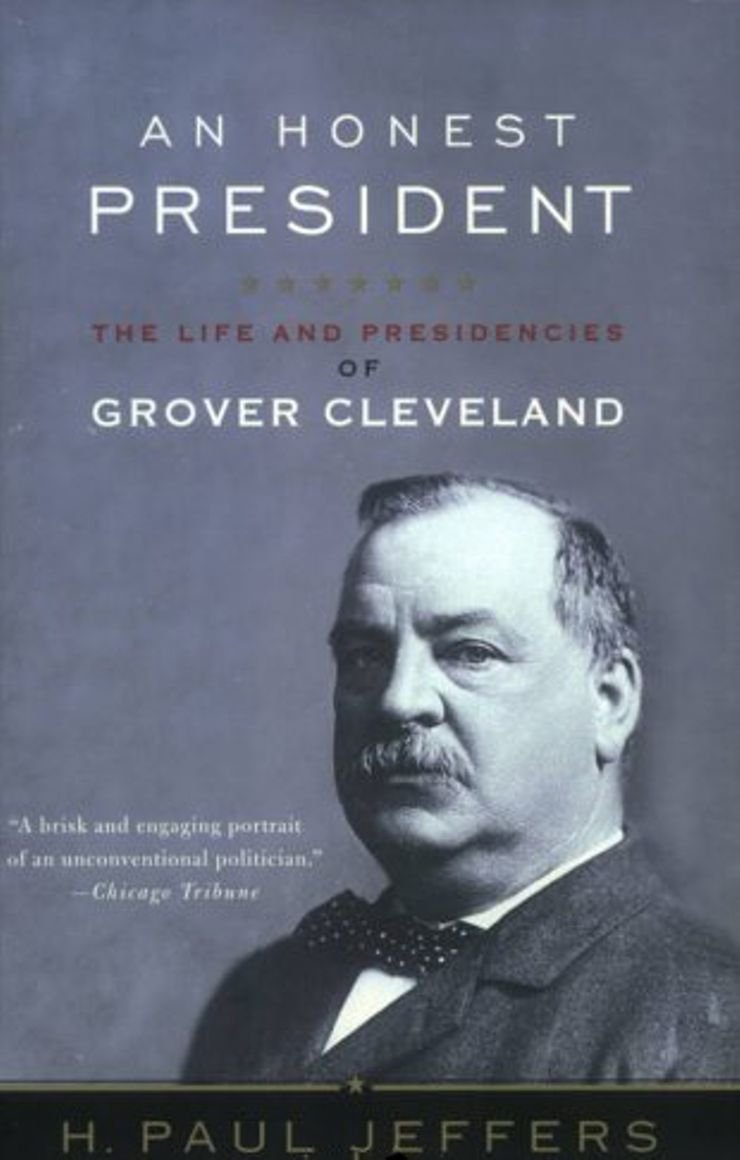Grover Cleveland
An Honest President: The Life and Presidencies of Grover Cleveland by H. Paul Jeffers
Tier 3
A few interesting things about Grover Cleveland before we get started. He is the only president to have served two non-consecutive terms, which makes him both the 22nd and 24th president. He is the only president to have gotten married while in office. And, most importantly, he was born down the street from me (this is only interesting to me).
Now that we got those out of the way let’s get into Grover and Mr. Jeffers's biography of him. Cleveland is one of only two Democrats to become president in the period between the Civil War and World War II (the other being Woodrow Wilson). He rose through the ranks of New York state politics and was steadfastly known as an honest and straightforward politician. You may not have always agreed with Cleveland’s positions, but it was difficult to fault the man making them.
He was elected president in 1884 by winning four swing states (New York, New Jersey, Indiana, and Connecticut) by tight margins over his Republican opponent Blaine. Blaine had hoped to court some of the Irish Catholic vote, long a Democratic stronghold, due to his mother being Irish and his help to that nation during his stint as Secretary of State. This strategy seemed likely to work until a Republican gave a speech denouncing the Democratic party as the party of “Rum, Romanism, and Rebellion.” The Irish Catholic voters did not care for this swipe and flocked back to Cleveland’s ticket.
There was additional tension regarding Cleveland’s campaign due to Tammany Hall, the Democratic machine that ran New York City. Cleveland didn’t like Tammany, and the feeling was mutual. Cleveland had spent much of his time as Governor of New York trying to root out political corruption, and Tammany was just a nest of corruption. Ultimately Tammany decided it would be better to have a Democrat who disliked them in the White House than a Republican.
Cleveland ran for re-election in 1888, winning the popular vote but failing to win the electoral college. The election again came down to those four swing states, and Cleveland could not carry his home state of New York and Indiana (Harrison, his opponent’s home state) and lost the election.
During Harrison’s presidency, Cleveland mostly worked and stayed out of politics until some of Harrison’s policies upset him to the point of speaking out. Cleveland opposed his financial plans (notably tariffs and a plan to tie the US currency to silver) and wrote an open letter about it. This thrusted him back into the spotlight and made him the front-runner for the 1892 Democratic nominee.
The 1892 election was one of the tamest in US history. Harrison’s wife was gravely ill with tuberculosis during the campaign, severely limiting his ability (or willingness) to campaign. She died two weeks before the election, and all the other candidates stopped campaigning. Harrison’s tariffs (seriously, it’s incredible how much these biographies talk about tariffs) had made imported goods more expensive, and voters flipped back to Cleveland.
Cleveland’s second term began with the Panic of 1893, which led to a depression. During this term, he campaigned against the Lodge Bill, which would have strengthened voting rights protections and, in particular, helped to ensure Blacks in the South could vote. They were, of course, constitutionally able to vote, but Southern Democrats had begun their process of finding ways to ensure they did not vote. Cleveland, as a Democrat, worked to kill the Lodge Bill.
Several labor disputes rose to national prominence during Cleveland’s second term, most notably the Pullman Strike. Cleveland sided against labor in this instance, claiming that the delivery of the mail, interrupted by this strike, allowed for a federal solution. He sent troops in to end the strike. The media and most of the political leaders of the day supported Cleveland’s actions. Still, in retrospect, it seems a harsh way to deal with workers who were appropriately striking for better wages and treatment. A significant point of contention in the strike was that Pullman’s company laid off workers, lowered wages, and refused to reduce the rents on the corporate housing (where workers were forced to live) or prices at company stores (which the workers were forced to shop at). Hard to look back on that one and side with Pullman.
After finishing his second term, Cleveland retired but kept a finger in politics. He occasionally was consulted by Theodore Roosevelt (the two had worked together during Cleveland’s time as Governor of New York when Teddy was in the Assembly there) and spoke out against woman’s suffrage claiming, “sensible and responsible women do not want to vote.”
Going through presidential biographies in a row is an interesting experience. You can’t help but look forward, and this period after Grant and before TR can best be described as “waiting for Teddy.” This book, in particular, dealt with that as Cleveland’s time as governor regularly references the man whose shadow looms so large in this era of American politics.
As for the book itself, it was a bit disappointing. Cleveland is an essential figure in American history who is largely lost to time. He was resolute in his opinions and, by all accounts, a principled man. Roosevelt looked up to him despite being from opposite parties. And yet, Cleveland’s legacy has aged poorly in many areas. This is a man worthy of an exciting and detailed biography, but this is not it. Perhaps there is one out there, and I picked the wrong one. I’ll let you know if I do.
